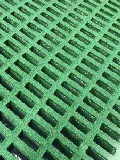loading...
- No. 9, Xingyuan South Street, Dongwaihuan Road, Zaoqiang County, Hengshui, Hebei, China
- admin@zjcomposites.com
- +86 15097380338
- Welcome to visit our website!
sand filter vessel
Understanding Sand Filter Vessels Essential Components in Water Treatment
In the realm of water treatment, the sand filter vessel plays a crucial role in ensuring the purity and safety of drinking water. This fundamental component is instrumental in various applications, ranging from municipal water treatment plants to industrial processing units. This article aims to explore the design, function, and significance of sand filter vessels in the water purification process.
What is a Sand Filter Vessel?
A sand filter vessel is a structure designed to remove suspended solids and contaminants from water through a filtration process involving sand. Typically cylindrical in shape, these vessels are filled with layers of different sizes of sand that trap impurities as water flows through. Depending on the design, a sand filter can operate under gravity flow or pressure, making it versatile for varying treatment needs.
Components of Sand Filter Vessels
1. Filter Media The key element of the sand filter vessel is its filter media, primarily composed of various grades of sand. The size and type of sand used can significantly affect filtration efficiency. Uniform sand particles facilitate consistent flow rates and adequate filtration, while graded sand can enhance the removal of specific contaminants.
2. Support Layer Beneath the sand layer, a support layer made of gravel is often used. This layer provides structural support for the sand and prevents it from washing away during backwashing—a process that reverses flow to clean the filter media.
3. Inlet and Outlet Manifolds These manifolds are essential for the efficient distribution and collection of water entering and exiting the filter vessel. The inlet ensures a uniform distribution of water, while the outlet removes filtered water.
4. Backwash System To maintain operational efficiency, sand filter vessels are equipped with a backwash system. This mechanism helps in cleaning the filter media by reversing the flow of water, dislodging trapped contaminants, and collecting them for disposal.
Working Principle of Sand Filter Vessels
sand filter vessel

The operation of a sand filter vessel can be summarized in a few simple steps
1. Influx of Water Raw water enters the vessel through the inlet manifold. As water flows downward through the layers of sand, larger particles and sediments are trapped on the surface while smaller contaminants are filtered out as the water passes deeper.
2. Filtration Process The intricate processes of straining, adsorption, and biological processes occur simultaneously. Suspended solids are captured within the sand matrix, while some microorganisms can also be captured or killed by the activated biofilms forming on the sand particles.
3. Filtered Water Exit Once the water reaches the bottom of the vessel, it exits through the outlet manifold, now significantly cleaner and clearer.
4. Backwashing After a certain period of operation, the filter media becomes laden with trapped contaminants and requires cleaning. The backwash process initiates reverse flow, lifting the sand and agitating it, thereby releasing the accumulated particles, which are then washed out of the system.
Importance of Sand Filter Vessels
Sand filter vessels are essential in various applications due to their effectiveness and economic advantages. They contribute to
- Drinking Water Purification Ensuring that municipal and residential water sources are safe for consumption. - Wastewater Treatment Enhancing the removal of impurities in industrial wastewater before discharge or reuse. - Aquaculture Maintaining the quality of water in fish farming systems, promoting healthy aquatic life.
Conclusion
The sand filter vessel is a vital component in the efficient treatment of water. Its ability to effectively remove suspended solids while being relatively cost-effective makes it an indispensable tool in various sectors concerned with water quality. As the demand for clean water continues to rise globally, understanding and utilizing sand filter technology will be pivotal in addressing water scarcity and contamination challenges. Through ongoing innovations and improvements in design, sand filter vessels will continue to play a significant role in safeguarding our water supplies for future generations.
-
The Rise of FRP Profiles: Strong, Lightweight, and Built to LastNewsJul.14,2025
-
SMC Panel Tanks: A Modern Water Storage Solution for All EnvironmentsNewsJul.14,2025
-
GRP Grating: A Modern Solution for Safe and Durable Access SystemsNewsJul.14,2025
-
Galvanized Steel Water Tanks: Durable, Reliable, and Ready for UseNewsJul.14,2025
-
FRP Mini Mesh Grating: The Safer, Smarter Flooring SolutionNewsJul.14,2025
-
Exploring FRP Vessels: Durable Solutions for Modern Fluid HandlingNewsJul.14,2025
-
GRP Structures: The Future of Lightweight, High-Performance EngineeringNewsJun.20,2025
